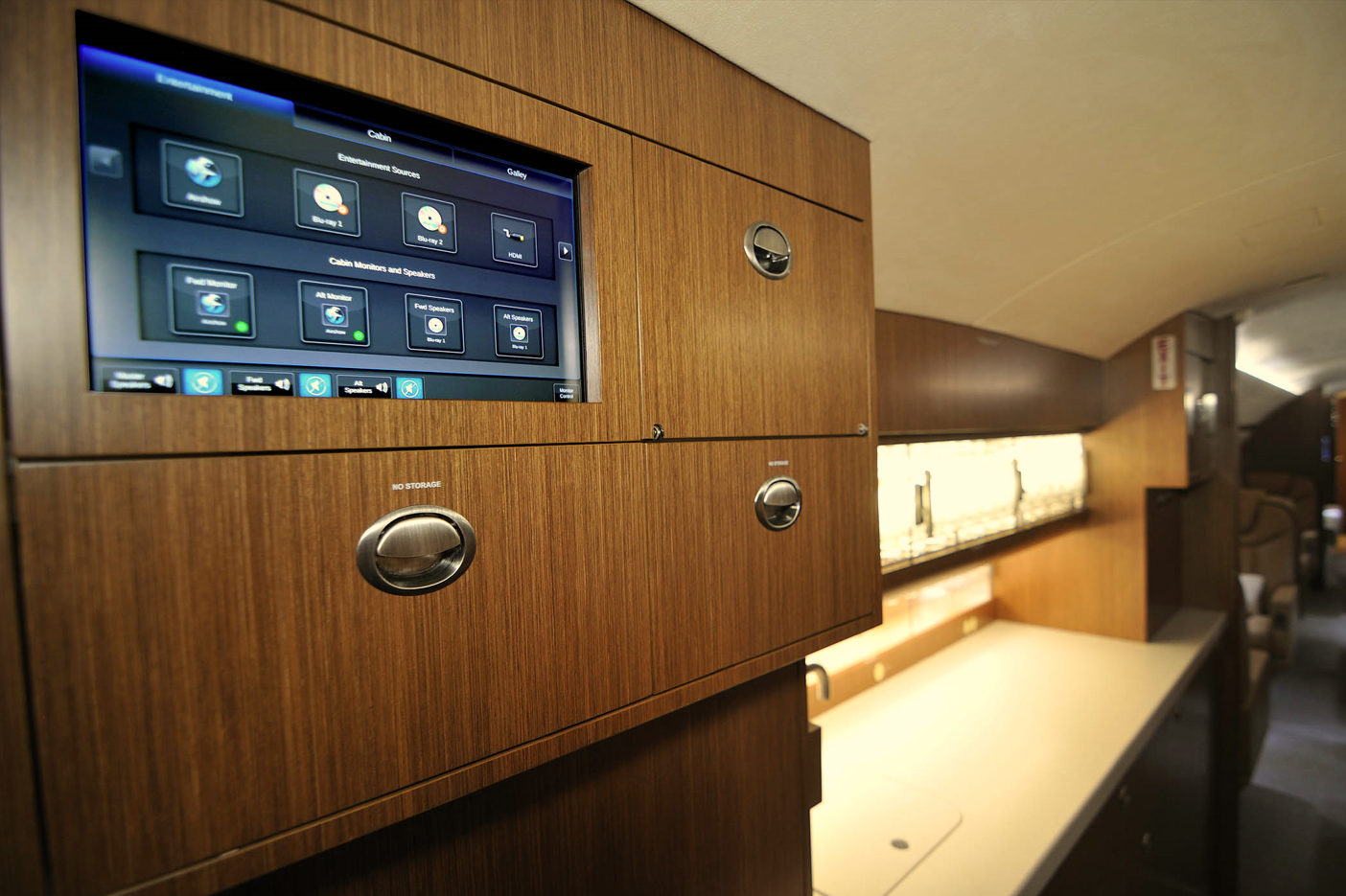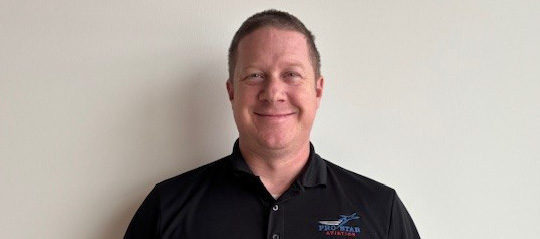No-Go Avionics

“You never change things by fighting the existing reality. To change something, build a new model that makes the existing model obsolete.”
Buckminster Fuller, American architect and futurist
Cockpit math: CRTs = AOGs.
In our last blog, “Brick phones and bizjets,” we got into the pending obsolescence issues that are part of operating with legacy CRT- and early generation LCD-based cockpit and cabin systems. When they fail, there just aren’t any new parts available to fix them.
I guess the only good news is, in most circumstances, CRTs and LCDs in your PFDs and MFDs will often give you warning signs that they’re on the way out. Dimming displays, dropping pixels, slow warm-ups are just some telltale signs that the end is near. Of course, knowing will only prolong your agony. In some cases, there are drop-in upgrades.
But, sooner or later, right when you need it the most, one of those displays is going to stay dark on start-up. Of course, in some few and very fortunate instances, MEL the unit and continue the trip.
But, admit it. You’re not that lucky. There are usually time limits to the MEL. When that happens, you’re not going anywhere soon. You just hope and pray that the “boss” isn’t on their way to an important meeting.
After everyone has deplaned and you gather outside of the aircraft to face the music, you’ve got your fingers crossed – literally – that the AOG is not the result of an issue that you knew was coming but kept putting off.
That’s a hard thing to explain your way out of. No matter why the owner wants to fly, there’s no good excuse – except weather – for their multi-million dollar investment to be stuck on the tarmac.
Honestly, the only saving grace this time is that you’re still at your home base. Imagine the added stress of suffering an AOG failure at some remote location. It’s a roll of the dice whether or not the aircraft can be returned to service in a short time. When you’re talking about failed PFDs, MFDs, controllers, FMSs – anything with a CRT or older LCD – the “fix” can be expensive, and lead times can be very long.
Planning for the unplanned.
Truth be told, the longer you put off replacing those obsolete components, the closer you are to a serious problem. Why? There just aren’t a lot of simple upgrade paths STC’d for many of these legacy systems.
Until the post-COVID biz aviation boom, the majority of owners were trading up before these issues were occurring. Many older aircraft were permanently parked and parted out.
But now, between the significant upsurge in use and the continually lengthening wait for new aircraft, owners are either keeping their aircraft longer or they are being sold – for very good prices – to the next owner.
In today’s market, upgrading legacy aircraft is big business. For a reasonable investment, the next owner can have a virtually new airplane for the fraction of the cost and wait time of said new airplane.
For example, let’s say you have a 20-year-old Challenger 604. A great airplane, no matter how you measure it. Your choice is to spend about $30 million on a new 650 or invest a fraction of that on upgrading the 604 with new Collins Fusion avionics, paint, and an interior. (I say invest because you’re going to get a good percentage of that back when you do sell.)
Heck, even if you replace both engines, you’re still looking at investing around 25-percent of the cost of that new 650 in the 604. And, dare I say it, you’re getting an airplane that can do everything as well, and, possibly better, than the brand-new version. It’ll even have that new airplane smell. And you’ve saved around $15 million. Not a bad day’s work.
In the event your boss really wants a new Challenger 650. If you order it today, the new jet probably won’t arrive in your hangar for 18 months – at least. That still leaves you with the problem of sooner or later having to deal with an AOG-level failure on your current 604.
The obvious solution is to go ahead and upgrade the avionics today. That not only eliminates the obsolescence issues, but it will add significant future value to your current aircraft. Think about it: when your shiny new 650arrive, the systems on your current 604 will be another 18 or so months older than they are today. Nobody’s going to want that airplane – or at least they won’t want to pay you much for it.
By upgrading it now, you get far greater reliability and capabilities and an instant and significant upswing in the aircraft’s resale value. Don’t believe me. Just ask any aircraft broker.
Frankenstein’s bizjet.
By now, you’re shaking your head, saying, “my boss won’t go for spending that kind of money on our airplane. Not when we can still find grey market replacements for the avionics we have.” Well, maybe you can, and more possibly you can’t.
There’s no arguing that since the early days of business aviation, owners have kept their aircraft flying by replacing broken units with instruments and avionics that have been “refurbished.” And that was fine when you were dealing with mechanical units that could be easily inspected to determine their mechanical health.
Even if you do find replacements that look good, there’s the nagging question about a unit’s lineage? Ah, but what about FAA-approved, “yellow-tagged” units? Again, just how far back in that display’s history can you see? Some of these units may have been in two or three panels before ending up in your facility. Sure they look good now, but how much life do they have left?
True, in some instances, you can send them back to the OEM for testing. But it’s a very good bet that most units won’t pass muster. You’ve wasted time and money on that one.
I’m not saying this won’t work. You can get lucky and find replacement units to fill your immediate need – for now anyway. But, when you’re picking through the avionics graveyard piecing together your panel, remember, even the newest pre-owned units are already old. Yes, they may work today, but think about what you are risking. Reliability and safety are top-of-mind here.
Ask yourself, where will you be when that display, radio controller, FMS, or whatever fails? Will it be severe clear or during an approach to minimums? My money is on the latter. As I mentioned before, nothing fails when you don’t need it.
As the one responsible for the safety and well-being of your aircraft, and its occupants, you need to have an honest heart-to-heart talk with that aircraft’s owner. It’s not an easy thing to do. Yes, there’s the chance that they’ll just toss in the towel, sell the airplane and, well, put you out of a job.
But that’s not likely. They obviously enjoy and value the flexibility, convenience, and unparalleled safety that comes with owning their own jet. And, the more they value that, the more likely they are to understand the increasing issues that will come unless they act now.
Of course, entering into these types of conversations is best done with some extra arrows in your quiver. Arm thyself. If you’re not comfortable putting together a plan of action, contact your MRO or a shop that specializes in your aircraft type and its equipment. They have the knowledge and experience to help you create a workable upgrade solution that adds significant value, reliability, and safety to whatever kind of aircraft you operate for as long as you choose to fly it.



